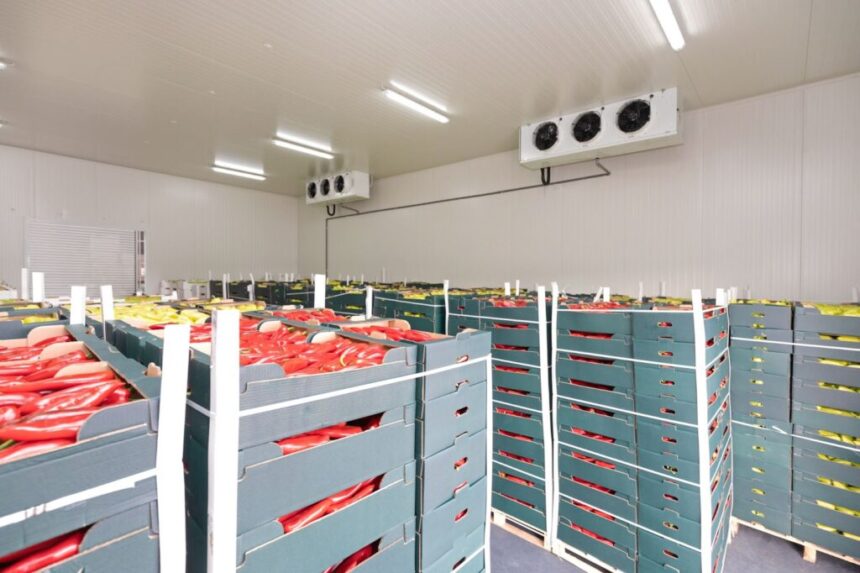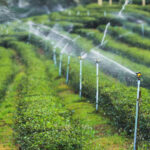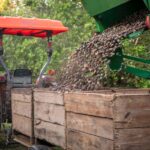Efficient cold storage systems are vital for preserving perishable crops and reducing post-harvest losses. These systems help maintain the quality, freshness, and market value of produce by slowing down respiration and microbial activity. Choosing and effectively using cold storage systems can significantly improve profitability for farmers and agribusinesses. Here’s a guide to help you make the right decision and maximize the benefits.
Choosing the Right Cold Storage System
1. Understand Your Crop’s Storage Needs
Each crop has unique storage requirements, such as optimal temperature, humidity, and airflow. For instance, leafy vegetables require high humidity and low temperatures, while fruits like apples and oranges may need moderate humidity levels. Research these requirements before selecting a system.
2. Consider Storage Capacity
Assess your production volume to determine the size of the cold storage unit you need. Overloading a storage facility can compromise its efficiency, while an oversized unit may lead to unnecessary energy consumption.
3. Evaluate the Cooling Technology
Cold storage systems use various technologies, including vapor compression, evaporative cooling, and absorption cooling. Vapor compression systems are energy-efficient and widely used, while evaporative cooling is cost-effective for small-scale operations in hot climates.
4. Look for Energy Efficiency
Energy consumption is a significant cost factor in cold storage. Look for systems with energy-efficient features such as proper insulation, LED lighting, and temperature control mechanisms. Solar-powered options can be a sustainable solution in areas with ample sunlight.
5. Consider Scalability
If your business is growing, choose a system that can be expanded to accommodate increased storage needs. Modular cold storage units are a practical option for scalability.
6. Verify Durability and Maintenance Requirements
Invest in a robust system made from durable materials that can withstand harsh conditions. Additionally, choose equipment that requires minimal maintenance to avoid high upkeep costs.
7. Evaluate Cost
Compare initial investment costs, operating expenses, and maintenance fees across different systems. While cheaper options may seem appealing, prioritize long-term cost efficiency and reliability.
Using Cold Storage Systems Effectively
1. Pre-Cool Crops Before Storage
Pre-cooling removes field heat and ensures that crops enter the storage facility at the right temperature. Common methods include hydrocooling, forced-air cooling, and vacuum cooling.
2. Maintain Optimal Conditions
Regularly monitor temperature, humidity, and airflow within the storage unit. Use sensors and automated controls to ensure consistent conditions.
3. Organize and Label Stored Produce
Organize crops in a way that promotes airflow and prevents spoilage. Clearly label stored produce to keep track of harvest dates and facilitate efficient rotation.
4. Avoid Overloading the System
Overcrowding can obstruct airflow and reduce the efficiency of the cooling system, leading to uneven temperatures and potential spoilage.
5. Clean and Sanitize Regularly
Maintain cleanliness within the storage facility to prevent contamination and fungal growth. Schedule regular cleaning and ensure proper waste disposal.
6. Train Staff
Educate your team on proper handling, storage practices, and equipment maintenance. Skilled personnel can ensure the system operates efficiently.
7. Perform Routine Maintenance
Inspect and maintain the cooling system periodically to prevent breakdowns and prolong its lifespan. Replace worn-out parts promptly and check for refrigerant leaks.
Choosing and using the right cold storage system for perishable crops is essential for reducing losses, maintaining quality, and increasing profitability. By understanding your crops’ needs, investing in suitable technology, and implementing proper storage practices, you can enhance the longevity and marketability of your produce. Whether you are a small-scale farmer or part of a large agribusiness, adopting efficient cold storage solutions can be a game-changer for your operations.







